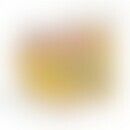Synonym(s)
Chlorhexidine gluconate; INCI designation: Chlorhexidine gluconates
DefinitionThis section has been translated automatically.
Pharmacodynamics (Effect)This section has been translated automatically.
Broad antimicrobial effect against various gram-positive and gram-negative bacteria. Low effective against some gram negative bacteria (Pseudomonas spp. and Proteus spp.), yeasts, dermatophytes and mycobacteria. Ineffective against bacterial and fungal spores, viruses and putrefactive fungi.
You might also be interested in
IndicationThis section has been translated automatically.
Inflammation of the mouth and throat mucosa. Antiseptic treatment of superficial abrasions, lacerations, lacerations and scratches. First degree burns.
Undesirable effectsThis section has been translated automatically.
Contact dermatitis, salivary gland swelling, immediate anaphylactoid reactions. The exact prevalence of chlorhexidine allergies is unknown (Sustal K et al. 2017). The widespread and increasing use of chlorhexidine is expected to increase the rate of sensitization. This includes IgE-mediated immediate reactions (detectable by prick testing).
Remark! With oral application: discoloration of tongue and teeth is possible! Do not use together with toothpaste.
InteractionsThis section has been translated automatically.
Interactions with anionic surfactants (e.g. contained in toothpaste) and soaps.
PreparationsThis section has been translated automatically.
Bactigras, Chlorhexamed, Chlorhexidingluconate Lsg., Cidegol C, Frubilurgyl, Hansamed Spray, Lemocin CX, Bepanthen Antiseptic wound cream (combined preparation with dexpanthenol).
LiteratureThis section has been translated automatically.
- Ammann PM et al (2018) Disinfectants. Allergo J 27:16-18
- Sustal K et al (2017) Chlorhexidine allergy-underestimated allergen with ubiquitous use. Allergo J Int 26: 69-70




